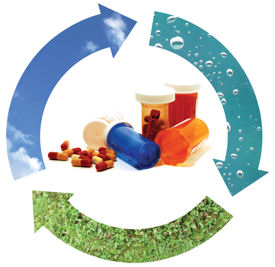
In my previous blog, I spoke about how drugs were ending up in our water supply. Although there are several causes by which this is happening, there are simple steps that we all can take to help mitigate the problem.
Responsible prescribing
There are several steps that prescribing physicians can take to reduce excess medications.
- Physicians should write scripts for smaller quantities, and should follow-up with patients closely to see if the specific medication prescribed is, indeed, appropriate.
- Physicians should follow evidence-based guidelines for prescribing meds.
- Physicians should minimize storing samples from pharmaceutical companies. Instead, they should insist that these companies provide coupons (even better: e-coupons) that patients could take to the pharmacies for a free sample. This would help streamline the supply of samples, and minimize the amount of “expired” samples that physicians have to throw away.
- Physicians should educate patients about their responsibility to use medications judiciously and to minimize the use of over-the-counter drugs.
Responsible disposal

There are now several methods by which patients, physicians, and other healthcare services can dispose of unused or expired medications. Remember: Most drugs should not be simply poured down the drain or flushed down the toilet! (The FDA has a list of drugs that can, or should be poured down the drain)
- Check with local city or county’s household trash and recycling service to see if they have a take-back program in the city.
- Check with local pharmacy to see if they have any local take-back programs available.
- If the drug label has specific instructions regarding the disposal follow that. Otherwise,
- Dispose of medications by a) removing them from their original packaging, b) sealing them in a container filled with an unpalatable substance such as coffee grounds or kitty litter, c) throwing them in the trash
Responsible consumption
Ideally, reducing the amount of drugs coming into the system would reduce the amount being thrown out. If we were all to simply consume exactly what we need, there would be no excess. Of course, this is in an ideal situation, and like most things, ideal never translates into reality. However, as a consumer, we can be more judicious about our purchasing. Here are some ideas.
- Minimize the temptation to purchase large quantities of over-the-counter medications simply because it appears to be cheaper per unit. It may seem cheaper at first, but think of the cost of all those extra pills that weren’t consumed before they expired. Plus, having a smaller bottle is safer in case of over-ingestion.
- Take medications only when needed. This sounds a bit preachy, but I have seen a fair-share of patients who will over-consume medications simply thinking that more = better. Remember ALL drugs have a side-effect profile. Be smart about taking meds.

